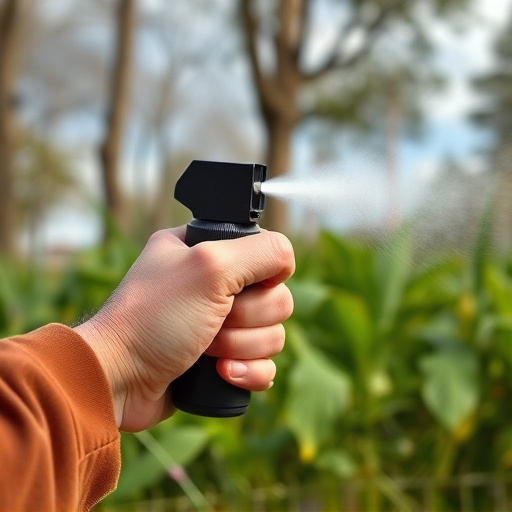Pepper spray, a non-lethal law enforcement tool, temporarily (2-5 minutes) incapacitates individuals through capsaicin irritation, causing tearing, itching, and respiratory distress. While initial symptoms dissipate quickly, residual effects can last up to an hour, impairing vision and reflexes. Strategic deployment, guided by legal constraints and ethical considerations, emphasizes its use as a last resort. Best practices include proper officer training, clear policy guidelines, regular reviews, and advancements in riot control technology to ensure proportional and lawful utilization.
Riot control agents, particularly pepper spray, are essential tools in law enforcement arsenal. This article delves into the intricate world of these powerful substances, focusing on understanding their mechanics and the lasting effects of pepper spray. We explore the duration of its impact and the critical legal considerations surrounding its use, providing insights for best practices to ensure public safety and compliance with the law. Key topics include the length of pepper spray effects and how law enforcement agencies must navigate their application.
- Understanding Riot Control Agents: An Overview of Pepper Spray
- The Duration of Pepper Spray Effects: What Law Enforcement Needs to Know
- Legal Considerations and Best Practices for Using Riot Control Agents in Law Enforcement
Understanding Riot Control Agents: An Overview of Pepper Spray
Riot control agents, including pepper spray, are chemical compounds designed to disrupt and disperse crowds during law enforcement operations. These agents work by irritating the eyes, nose, and respiratory system, temporarily incapacitating individuals and enabling officers to regain control of a situation. Pepper spray, one of the most commonly used riot control agents, is known for its fast-acting irritant properties.
The effects of pepper spray last for approximately 2-5 minutes, depending on factors like the concentration of capsaicin (the active ingredient), weather conditions, and individual sensitivity. During this time, individuals affected will experience tearing, itching, burning sensations in the eyes and nose, coughing, difficulty breathing, and temporary blindness. These symptoms are intended to be non-lethal, allowing for the safe resolution of chaotic scenarios while minimizing harm to both civilians and officers involved.
The Duration of Pepper Spray Effects: What Law Enforcement Needs to Know
Pepper spray, a common riot control agent used by law enforcement, is designed to temporarily incapacitate individuals through a burning sensation and reduced visibility. The duration of its effects varies based on several factors such as the concentration of capsaicin (the active ingredient), weather conditions, and individual sensitivity. Typically, the initial impact can last for around 2-5 minutes, leaving the target individually disoriented and unable to withstand physical confrontations.
However, residual effects can persist for an extended period, ranging from 15 minutes to an hour or more. This prolonged impact significantly hinders an individual’s ability to drive, operate machinery, or perform tasks requiring clear vision and quick reflexes. Law enforcement agencies must be cognizant of these extended effects when deploying pepper spray, especially in crowded areas where bystanders could potentially be affected for a longer duration.
Legal Considerations and Best Practices for Using Riot Control Agents in Law Enforcement
The use of riot control agents, such as pepper spray, by law enforcement is a complex issue that involves careful consideration of legal boundaries and ethical implications. While these agents can be effective in de-escalating violent situations and protecting both officers and civilians, their application must adhere to strict protocols. One crucial aspect to consider is the duration and impact of the effects of pepper spray. According to research, the active ingredient in most commercial pepper sprays, capsaicin, typically causes irritation that peaks around 20 minutes after application and starts to dissipate gradually afterwards, with symptoms usually subsiding within 1-2 hours. However, severe cases may require medical attention.
Best practices dictate that officers should only use pepper spray as a last resort when other de-escalation techniques have been exhausted. They must be trained in the correct usage, including understanding the appropriate distance and aiming for specific targets like eyes, nose, or mouth. Furthermore, law enforcement agencies should implement clear guidelines on when and where these agents can be deployed to ensure their use remains proportional and lawful. Regular reviews of policy and training are essential to keep up with evolving legal considerations and advancements in riot control technology.
Riot control agents, particularly pepper spray, have become essential tools for law enforcement in managing chaotic situations. Understanding the duration of their effects is crucial for effective deployment. This article has provided insights into the workings and legal considerations of riot control agents, especially focusing on how long pepper spray effects last. By adhering to best practices and considering the legal implications, law enforcement agencies can ensure these agents are used responsibly and proportionally, thereby maintaining public safety and order.
